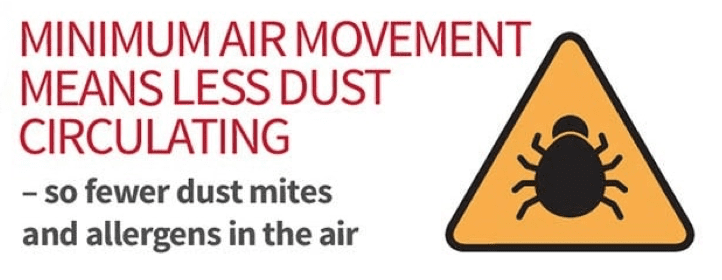SUSTAINABILITY
Solar Panels
ENERGY SAVING FEATURES
- Photovoltaic panels (solar panels) to the roof, positioned to maximise performance.
- Fit and forget technology – low maintenance
- Real time WIFI monitoring capabilities
- Hybrid Inverter. Future proof for simple battery storage deployment
- Potential to export excess through the new SEG scheme for additional income
SEG rate subject to chosen Utility provider
The potential of Solar Generation is subject to individual usage and irradiance – not a guarantee of performance but based on predictions under IET code of practice etc. etc.
Airsource Heat Pumps
In addition airsource heat pumps are highly efficient because they transfer heat from the outside air to heat your home. This means they can provide up to four times the amount of energy they consume. They also have a lower carbon footprint compared to traditional heating systems, as they use renewable energy sources.
UNDERFLOOR HEATING
Essentially the whole floor acts as a radiator emitting a more even heat upwards throughout the room as opposed to a convection heat from a specific area . Due to size of the area the flow temp is set lower reducing energy requirements and costs.
Underfloor heating is a great way to keep your home warm. It’s lovely to walk on, it distributes heat evenly around each corner of the room, and it frees your walls from radiators, making more space for paintings, shelf units or even picture windows – or allowing you to create a minimalist look if you wish.
KEY FEATURES
- Comfort! Your feet will be lovely and warm, so you can walk around barefoot all year – it’s particularly welcoming in the bathroom when you step out of the bath or shower
- It distributes heat evenly and consistently around each room
- A suitably sized unit can heat a larger area than an individual radiator, and works at a lower temperature, so it could reduce your heating bills
- Less wastage – your floors will stay warm even if the windows are open or the room is very draughty
- It’s hidden – so it doesn’t spoil your décor or take up space with ugly, bulky radiators
- It can be installed below stone, tile, wood or carpeted floors (as long as the carpet isn’t too thick – a 1.5 tog is generally considered the maximum suitable thickness)
- It might enhance your home’s selling price: underfloor heating has a reputation for being state of the art and high spec and could attract buyers looking for a luxurious property
- Provide heating in a room from the floor up for consistent, efficient warmth. Warm water systems run hot water through pipes to create heat, whereas electric underfloor heating heats wiring beneath the floor to generate heat.
- Traditional radiators need to be heated to a high temperature (between 65-75 degrees Celsius) in order to heat up a room effectively, whereas floor heating only needs to run at a temperature of 29 degrees Celsius or less, depending on the floor finish, in order to warm the room – thereby consuming less energy, and keeping your energy bills far lower.

When you have underfloor heating, you no longer need to worry about sharp edges or hot surfaces of radiators when younger family members are in the house. The heating system is safely tucked out of the way and won’t get too hot to the touch.
Radiant heat is also much better for the air quality in a room since it keeps the air fresh and oxygen-rich. On the other hand, high temperatures caused by radiators increase discomfort and reduce oxygen levels. The thermal circulation from air rising to the ceiling and then back gets all the dust going in circles which will not happen with a floor heating system.
However, thanks to the floor being heated through, any dust mites and other creepy crawlies will find that the underfloor heating makes their environment too warm and dry for them to live and breed in.
The results of switching to in-floor heating can be astounding. Studies show that installing radiant heating in your home can reduce the amount of dust mites present by up to 80%!
As a result, people who suffer from respiratory illnesses such as asthma will feel far more comfortable with this kind of set up.

